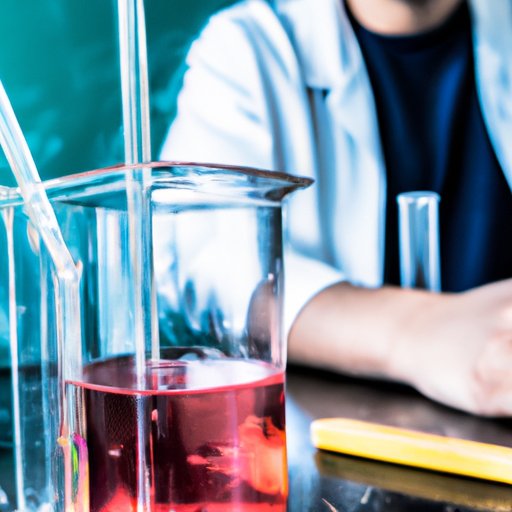I. Introduction
Chemical changes happen all around us, from cooking to digesting food to burning fuel. But what exactly is a chemical change, and how can we identify when it happens? Understanding this process is crucial for advancements in science and everyday life. In this article, we will explore the signs of chemical changes, differences between them and physical changes, the science behind this process, and real-life examples to help readers understand the transformative nature of chemical reactions.
II. 7 Key Signs That a Process is a Chemical Change: A Beginner’s Guide
A chemical change is a process that creates a new substance with different properties and characteristics than its original components. It differs from a physical change, which only alters the substance’s appearance without changing its fundamental composition. Here are the 7 key signs that indicate a process is a chemical change:
- Color Change
- Gas Production
- Precipitate Formation
- Temperature Change
- Light Production
- Odor Change
- Irreversibility
Each sign occurs due to a chemical reaction that happens during the process. For example, a color change can signify that a new substance is created with a different molecular structure and arrangement. Gas production can indicate that two substances have reacted chemically to form a new gas. Temperature change happens due to the energy absorbed or released during the chemical reaction.
III. Chemical Change vs Physical Change: How to Identify the Difference
While chemical and physical changes may seem similar, they have significant differences. Identifying these changes is essential as they have different implications on the properties of the substance. Physical changes are reversible and only affect the substance’s appearance, while chemical changes are irreversible and form a new substance.
Here are some examples of common physical changes:
- Boiling water
- Melting ice cubes
- Tearing paper
- Bending a metal rod
Physical changes alter the substance’s physical properties, such as shape, size, and state of matter. They do not change the fundamental composition of the substance.
IV. Exploring the Transformative Nature of Chemical Changes
Chemical changes are transformative and create a new substance with different properties. These reactions happen due to the breaking and forming of chemical bonds between atoms. The law of conservation of mass states that in a chemical reaction, the total mass of the reactants must be equal to the total mass of the products. The chemical changes occur due to the energy absorbed or released during the reaction.
Chemical changes have many applications that impact society, such as creating new medicines or manufacturing materials. Understanding these changes can lead to better scientific advancements that can benefit society.
V. The Science Behind Chemical Changes: A Deep Dive into the Process
Chemical reactions occur due to the breaking and forming of chemical bonds between atoms. There are a variety of chemical reactions, including synthesis, decomposition, and combustion. These reactions depend on factors such as temperature, pressure, and concentration. The rate of the reaction can also be influenced by a catalyst or an inhibitor.
Understanding the science behind chemical reactions is crucial, as it explains how and why reactions happen. It also allows us to control the reaction to create new substances and materials.
VI. Real-Life Examples of Chemical Changes in Action
Chemical changes are present in everyday life, such as in cooking or digestion. Cooking involves a variety of chemical reactions, from the Maillard reaction when searing steak to the fermentation process when making bread. Digestion involves breaking down food into smaller molecules through a series of chemical reactions.
Understanding chemical changes can help people understand the world around them and make better decisions in their daily lives.
VII. Why Understanding Chemical Changes is Crucial for Scientific Advancement
Chemical changes have played a crucial role in scientific advancements throughout history, from discovering new elements to creating new medicines and materials. Exploring and understanding these changes can lead to future breakthrough advancements.
VIII. Teaching Chemical Changes: How to Effectively Explain This Complex Process
Explaining chemical changes can be challenging, but breaking it down into smaller, more understandable parts can help. Using visual aids and hands-on experiments can also help communicate the concepts. Resources, such as books, videos, and online courses, are available that can help learners understand these complex processes.
IX. Conclusion
Understanding chemical changes is essential for scientific advancement and everyday life. The seven key signs that indicate a process is a chemical change, the differences between chemical and physical changes, and the transformative nature of chemical changes-highlight the importance of this understanding. To continue learning and exploring chemical changes, readers should continue to study the science behind chemical processes and apply it to real-life situations.
